iPhone 12 Pro Max vs. Galaxy Note 20 Ultra: Premium flagship fight!
The best from iOS and Android face-off in a fight between the iPhone 12 Pro Max and Galaxy Note 20 Ultra
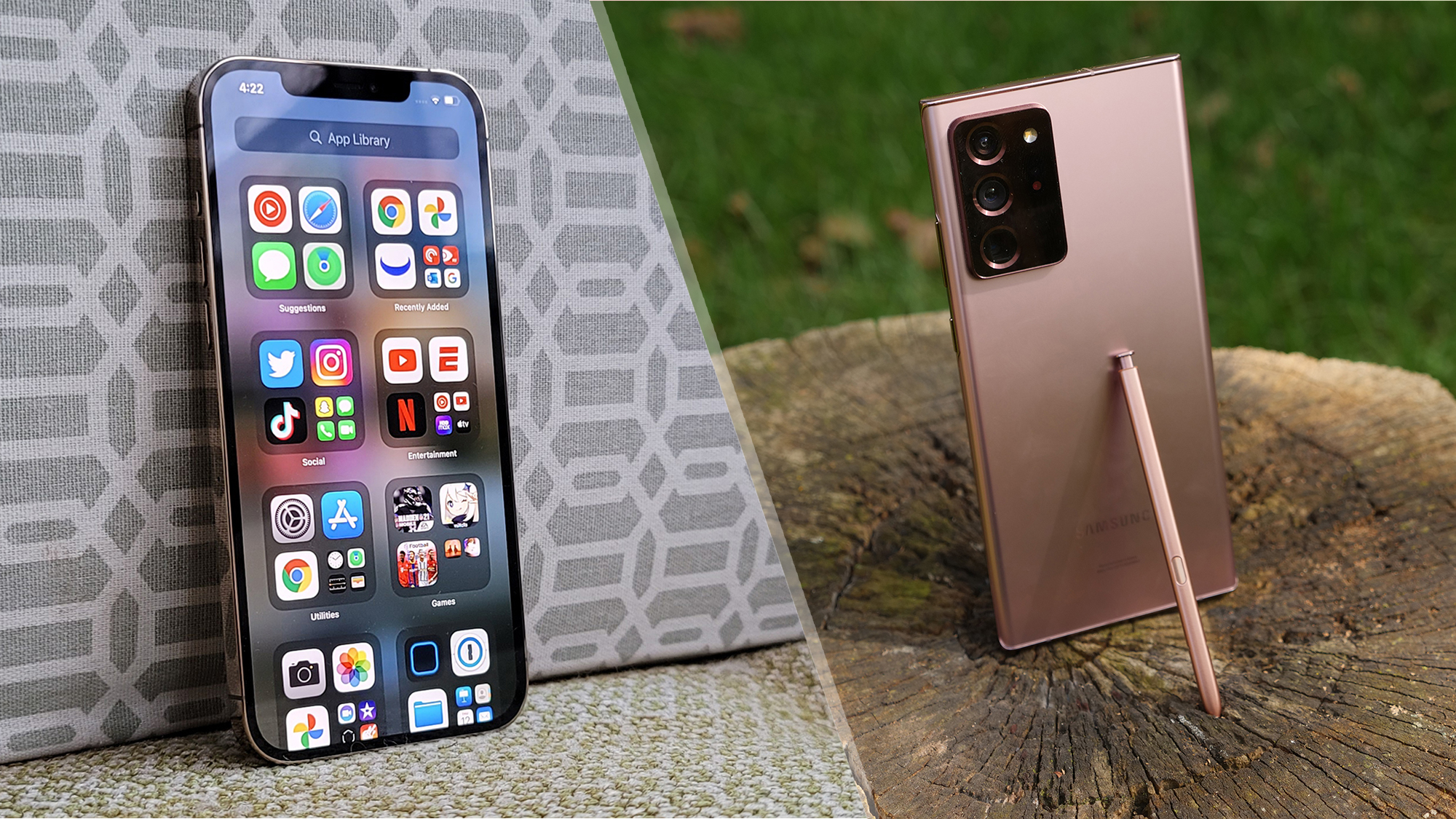
The iPhone 12 Pro Max is finally available and we wanted to put it up against the best Android has to offer in the form of the Samsung Galaxy Note 20 Ultra. Apple has a few known advantages, like the A14 Bionic chip, but the Galaxy Note 20 Ultra is no slouch with a top-of-the-line QualcommSnapdragon 865+ CPU and a few other tricks up its sleeves.
Both of these phones start at $1,099 or above, so if you are looking for a more budget-friendly smartphone, consider the other compelling options in that market. But these are the true top-end flagships and they command premium pricing.
- iPhone 12 mini review: a pocket-sized powerhouse
- iPhone 12 Pro Max review: Simply the best
- iPhone 12 vs. iPhone 12 Pro: Which should you buy?
As you’ll see, there are quite a few similarities between these two devices and some of what separates them can be quite subjective. So we’ll try to show you what we’re seeing and offer our opinion, but naturally, you can determine based on your own preference whether you agree or not.
Our breakdown of the iPhone 12 Pro Max versus the Galaxy Note 20 Ultra across six different categories will help decide which is the right choice for you.
| Row 0 - Cell 0 | iPhone 12 Pro Max | Galaxy Note 20 Ultra |
| Display (refresh rate) | 6.7-inch, OLED, Super Retina XDR (2,778 x 1,284, 60Hz) | 6.9-inch Super AMOLED 2X (3,200 x 1,440, 120Hz) |
| CPU | Apple A14 Bionic | Qualcomm Snapdragon 865+ |
| RAM | 6GB | 12GB |
| Storage | Starts at 128GB | Starts at 128GB |
| MicroSD slot | No | Yes |
| Rear cameras | 12MP f/1.6 (Wide-angle), 12MP f/2.4 (ultra-wide), 12MP f/2.2 (Telephoto) | 108MP f/1.8 (Wide-angle), 12MP f/3.0 (Telephoto), 12MP f/2.2 (Ultrawide) |
| Front camera | 12MP, f/2.2 aperture, TrueDepth | 10MP, f/2.2 aperture |
| Battery size | 3,867 mAh | 4,500 mAh |
| Water resistance | Yes, IP68 | Yes, IP68 |
| Colors | Graphite, Silver, Gold, Pacific Blue | Mystic Black, Mystic White, Mystic Bronze |
| Dimensions | 6.3 x 3.1 x 0.29 inches | 6.5 x 3 x 0.32 inches |
| Weight | 8 ounces | 7.3 ounces |
iPhone 12 Pro Max vs. Galaxy Note 20 Ultra: price and value
The iPhone 12 Pro Max starts at $1,099 for a 128GB model with 6GB of RAM. You can double your storage to 256GB for another $100, or for $1,399, you can have the maxed-out 512GB model we reviewed.
The Galaxy Note 20 Ultra gets a higher starting price at $1,299 for the 128GB model with 12GB of RAM. Jumping up to $1,449 gets you up to 512GB of storage.
While the full retail pricing tips in favor of the iPhone 12 Pro Max, the Galaxy Note 20 Ultra is consistently on sale for the same $1,099 for the base model and $1,249 for the 512GB model. This has been the more common pricing for these phones since early September, so while I’m not going to give the Galaxy Note 20 Ultra the win on pricing, I’m at least calling it a draw.
Stay in the know with Laptop Mag
Get our in-depth reviews, helpful tips, great deals, and the biggest news stories delivered to your inbox.
Winner: Draw
iPhone 12 Pro Max vs. Galaxy Note 20 Ultra: design
This is a real battle of the titans, both in terms of size and my own feelings about the overall hardware design.
While the iPhone 12 Pro Max is undeniably a giant slab of a smartphone, I still love Apple’s redesign as it applies to this massive phone. Despite what you may think from images of the squared-off design, it is still comfortable to hold and thanks to its relatively short height, I still find it usable one-handed in most situations. Pocketability is going to be a problem for some, particularly if you opt to use it with a case, but I didn’t find it any more problematic than other large smartphones.
The flat display is extremely functional and, while I wish the notch would vanish ( or at least be reduced further), you learn to ignore it. The iPhone 12 Pro Max got a nice durability boost this year with the upgrade to Apple’s new “Ceramic Shield” display that offers 4x better drop resistance to go along with IP68 water and dust resistance, which is now the best we’ve seen on a mainstream smartphone.
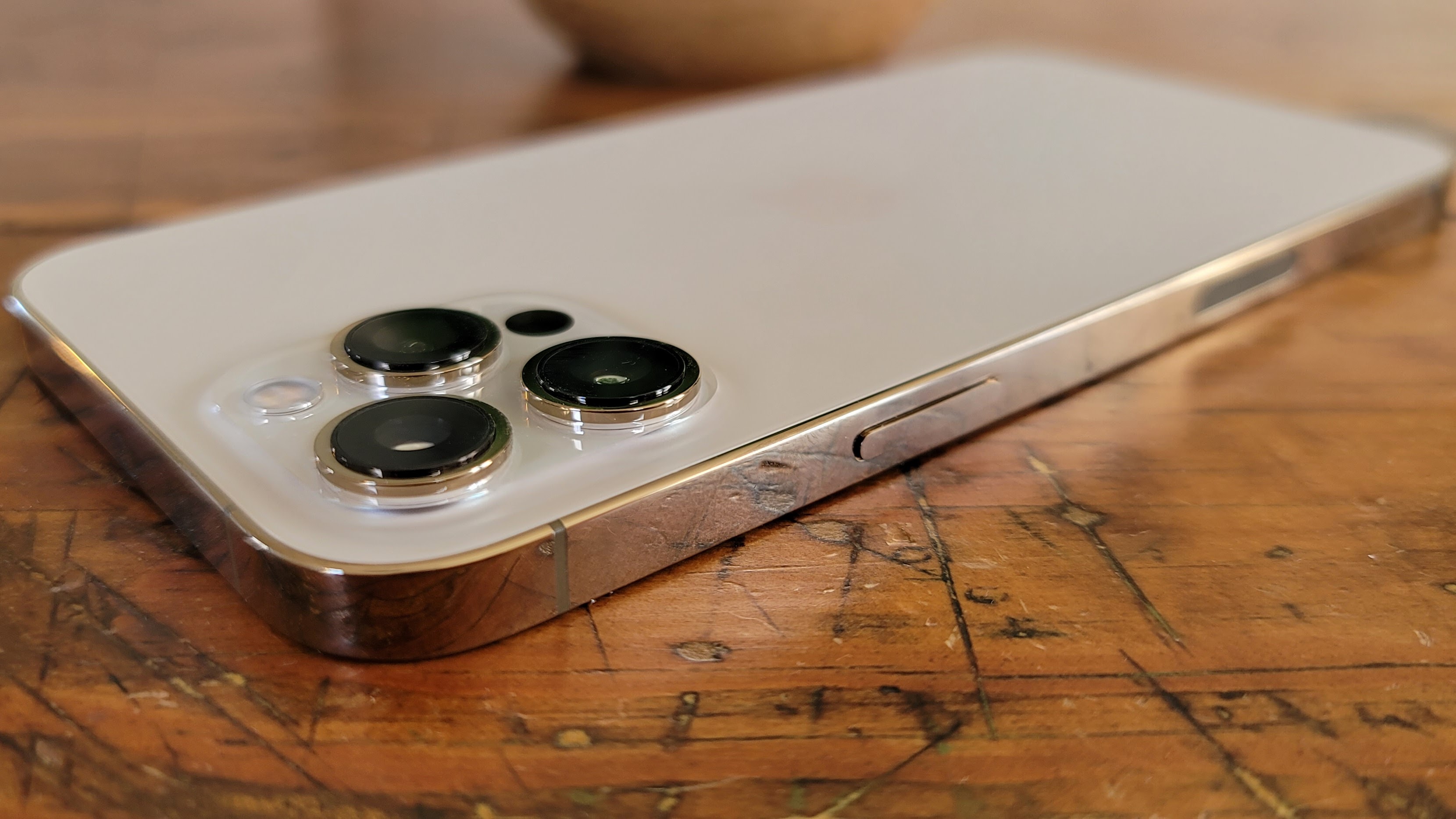
The Galaxy Note 20 Ultra isn’t to be shortchanged when it comes to design either. I find the blend of the squared-off top and bottom with the rounded edges to be gorgeous and unquestionably more comfortable both in hand and in pocket than the iPhone 12 Pro Max. With that said, when it comes to usability, the waterfall display design is less ideal for me.
The frosted metallic back of the Galaxy Note 20 Ultra looks stunning as well, particularly the Mystic Bronze of my review unit and it thankfully sheds fingerprints with ease. My biggest complaint with the Galaxy Note 20 Ultra's design remains the massive camera array on the back. It prevents the phone from resting easily on its back and will drive many users to a case, adding thickness to the phone and spoiling the design.
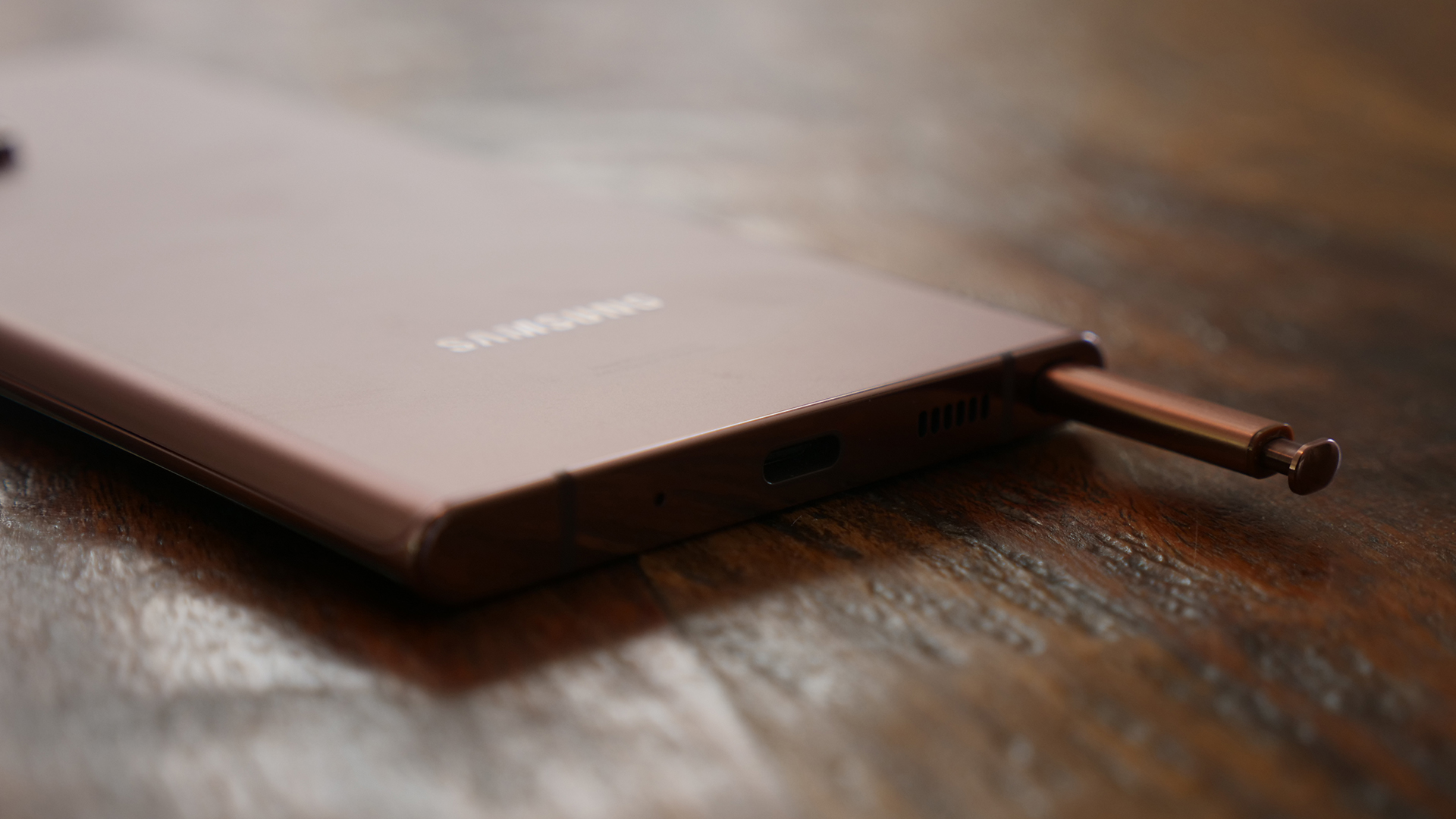
Looking purely at the dimensions, the iPhone 12 Pro Max (6.3 x 3.1 x .029) is the smaller of the two in both height and depth, while the Galaxy Note 20 Ultra (6.5 x 3 x .032 inches) is a bit narrower. I noticed the height difference more than anything else as the Galaxy Note 20 Ultra is just beyond the range where I can reach the full screen from top to bottom and left to right without repositioning my grip. Given the dimensions, it’s perhaps a bit of a surprise that the iPhone 12 Pro Max is the heavier of the two at 8 ounces to 7.3 ounces, but this is likely a combination of the greater volume of the boxier design as well as the materials used.
I don’t think there’s a clear winner here when it comes to design. Both stand out as high-end flagship devices and both have some pluses and minuses when it comes to how the design deals with the necessarily large size of the smartphones. Take your pick, there are no losers in this category.
Winner: Draw
iPhone 12 Pro Max vs. Galaxy Note 20 Ultra: display
The iPhone 12 Pro Max features a 6.7-inch, Super Retina XDR OLED with a 2,778 x 1,284-pixel resolution. Those specs are no match for the Galaxy Note 20 Ultra, however, with its 6.9-inch Dynamic AMOLED 2X with a 3,200 x 1,440-pixel resolution and a dynamic refresh rate of up to 120Hz.
Both displays are remarkable when viewed alone, offering an absolutely vibrant display of color particularly when it comes to HDR content. Placing them side-by-side while viewing my preferred HDR test case, Our Planet on Netflix, there are clear differences between the two. I find that the Galaxy Note 20 Ultra is more color accurate than the iPhone 12 Pro Max. Taking a look at this jungle scene, the iPhone is adding a yellow-green tinge to the sky through the trees that shouldn’t be present while the Galaxy Note 20 Ultra delivers the slight bluish-white that should be there. There’s also a clear color difference with the Galaxy Note 20 Ultra being much deeper and richer while the iPhone 12 Pro Max pushes a brighter look.
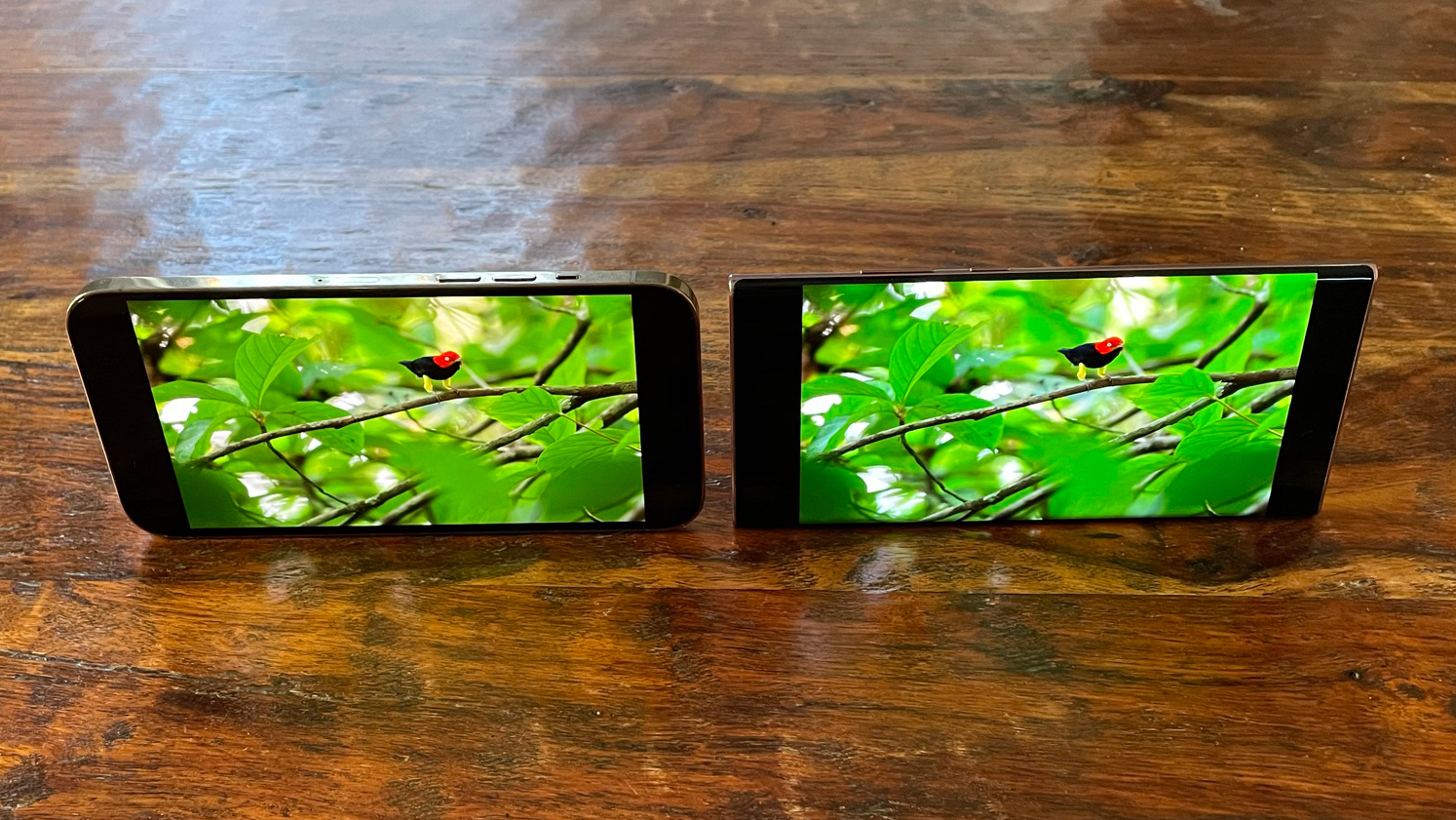
The biggest difference between these two displays is the Galaxy Note 20 Ultra’s dynamic refresh rate; it can range from 10Hz all the way up to 120Hz while the iPhone 12 Pro Max is locked at 60Hz. Many rumors are pointing to this changing with the iPhone 13, but for now, it’s a clear advantage for the Galaxy Note 20 Ultra.
The faster refresh rate makes everything that supports it, from the OS itself to apps and games, look and feel more responsive than they are on the iPhone 12 Pro Max. This isn’t a deal-breaker for the iPhone by any means; Apple has always done a brilliant job of making its phones feel quick and responsive with 60Hz, but there’s no denying that the variable refresh rate is better.
Taking a look at our colorimeter results, the iPhone 12 Pro Max covers 119.7% of the sRGB color spectrum, which pales in comparison to the 201% of the Galaxy Note 20 Ultra. It’s worth noting that the Galaxy Note 20 Ultra also offers a “natural” mode for those who prefer a less colorful palette but that brings the color coverage down to 122%.
Brightness is much closer between the two with the iPhone 12 Pro Max reaching 654 nits of brightness compared to 662 nits for the Galaxy Note 20 Ultra. The Galaxy Note 20 Ultra does look brighter to me, but as you would expect, this is a negligible difference and both are perfectly visible in daylight.
Winner: Galaxy Note 20 Ultra
iPhone 12 Pro Max vs. Galaxy Note 20 Ultra: performance
This isn’t a competition. The iPhone 12 Pro Max and its A14 Bionic chip absolutely buries the Snapdragon 865+ in the Galaxy Note 20 Ultra, just like every other non-iPhone 12 smartphone on the market, but if you are interested in the details, here’s the rundown.
To be fair, both smartphones are fast enough for any task or game you are likely to throw at them. In my review of each I loaded up a dozen or more Google Chrome tabs, apps, picture-in-picture videos and games and there’s nothing they can’t handle. With that said, the iPhone 12 Pro Max and the A14 Bionic are simply otherworldly as the benchmarks and real-world tests will show, and it’s worth considering that developers could take greater advantage of that going forward with more demanding apps and games.

On the Geekbench 5.0 overall performance test, the iPhone 12 Pro Max achieved a score of 4,111, which is the second-highest score we’ve ever seen from a smartphone, bested somehow by the iPhone 12 mini. The Galaxy Note 20 Ultra isn’t terrible by any means, at 3,294 as that’s behind only a handful of non-iPhone 12 devices, but there’s no denying it’s a distant second place in this contest.
In our Adobe Premiere Rush video editing test, the iPhone 12 Pro Max flexed even further needing only 28.5 seconds to finish rendering and exporting a 4K video to 1080p. The same task took the Galaxy Note 20 Ultra 1 minute and 16 seconds, so nearly 3 times longer.
Winner: iPhone 12 Pro Max
iPhone 12 Pro Max vs. Galaxy Note 20 Ultra: battery life and charging
While the rest of the iPhone 12 lineup has rightfully been criticized for weak battery life, the iPhone 12 Pro Max largely avoids this problem. However, it still lacks a USB-C power adapter in the box, which is aggravating regardless of Apple’s claimed environmental motive. The Galaxy Note 20 Ultra, on the other hand, includes a 25W fast charger in the box.
Looking at the battery life, the iPhone 12 Pro Max edged out the Galaxy Note 20 Ultra in our Laptop Mag battery test, which involves continuous web surfing at 150 nits of brightness. The iPhone 12 Pro Max made it 10 hours and 53 minutes compared to 10:27 for the Galaxy Note 20 Ultra. That’s with the Galaxy Note 20 Ultra display set to 60Hz; with the dynamic 120Hz setting on, it dropped to 7 hours and 59 minutes. With the iPhone 12 Pro Max, you could get another hour or so if you disable 5G.
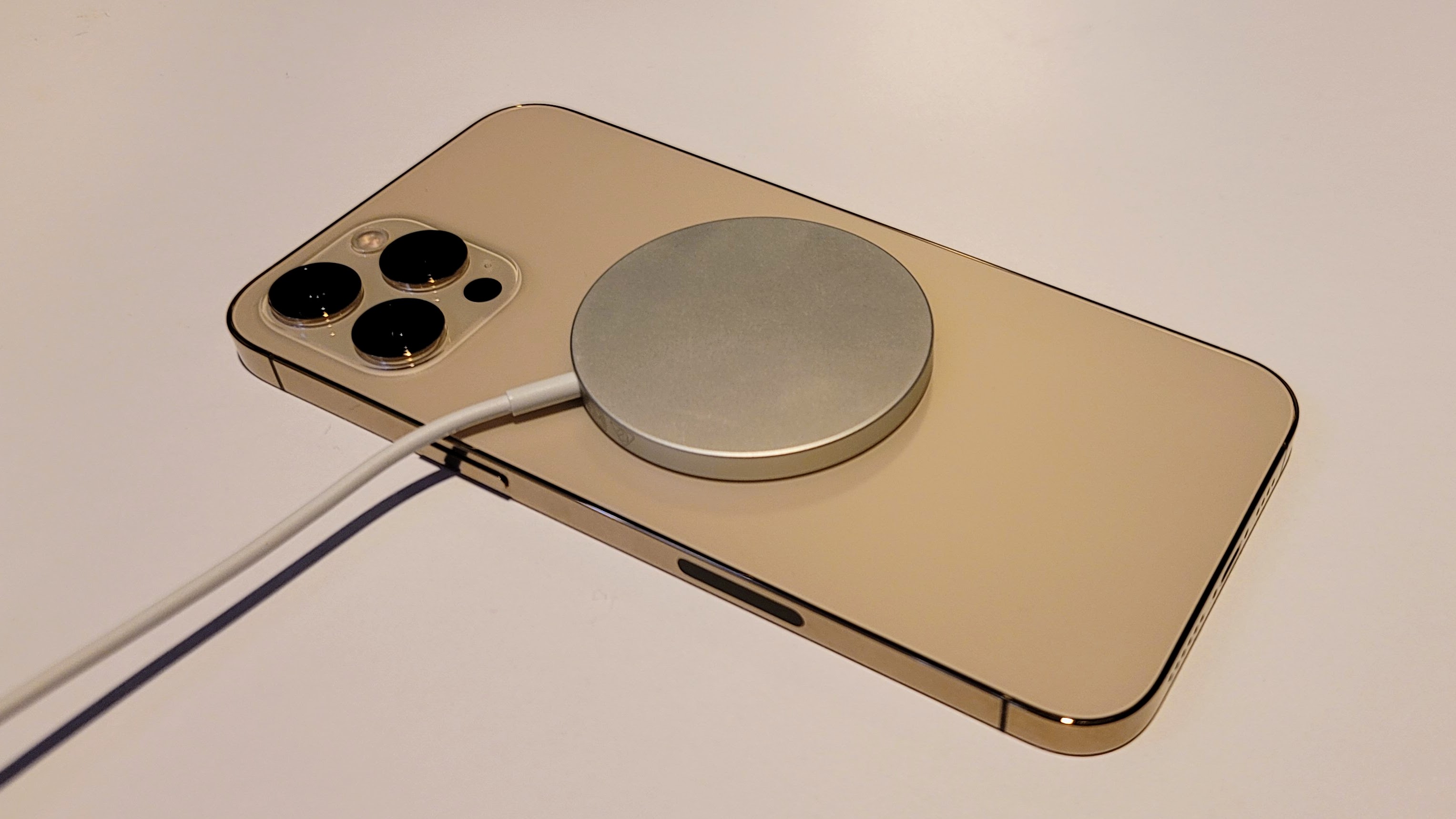
Both smartphones support wireless charging with Qi-compatible chargers, but of course, the iPhone 12 Pro Max also adds new MagSafe charging. This is a combination of Qi and a circular magnet located on the back of the iPhone. The MagSafe charger is available for $39 from Apple.
MagSafe is the icing on the cake for the iPhone 12 Pro Max’s victory in this category.
Winner: iPhone 12 Pro Max
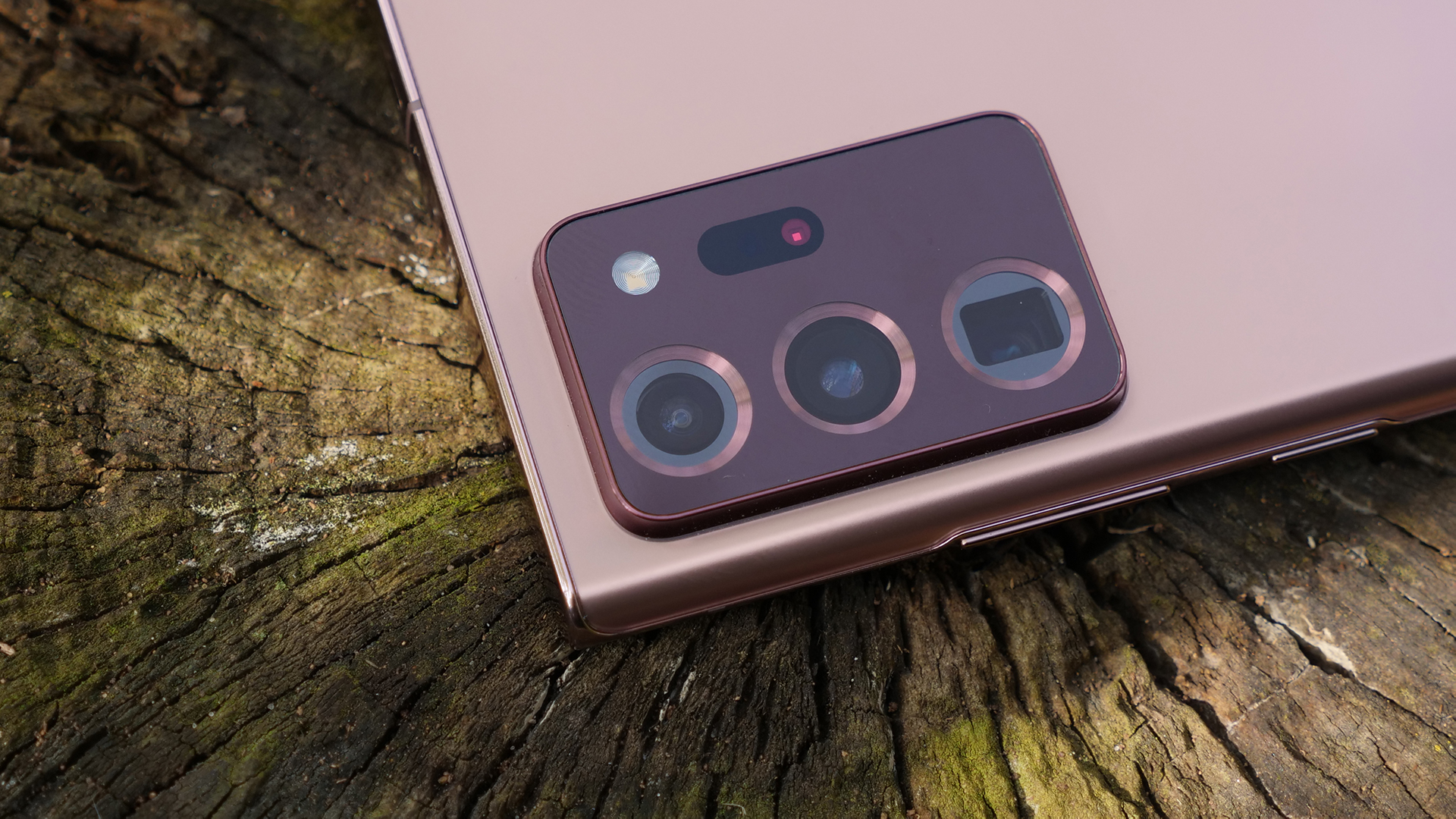
iPhone 12 Pro Max vs. Galaxy Note 20 Ultra: cameras
While the precise specs differ, both of these smartphones offer a similar array of cameras with a wide-angle, ultra-wide and telephoto on the back and a single front-facing camera. The iPhone 12 Pro Max adds its LiDAR scanner and TrueDepth sensor to the mix while the Galaxy Note 20 Ultra uses a laser autofocus system.
The iPhone 12 Pro Max keeps things consistent in the megapixel department with all four of its cameras at 12MP. The ultra-wide is far and away the fastest at f/1.6 while the ultra-wide is the slowest at f/2.4 and the telephoto and front-facing both come in at f/2.2.
The Galaxy Note 20 Ultra, on the other hand, really blows things away with its primary camera, a 108MP, f/1.8 wide-angle lens. The other two rear cameras are both 12MP: an f/2.2 ultra-wide and an f/3.0 telephoto. Finally, the front-facing camera comes in at 10MP and f/2.2.
Daytime photos from both cameras are excellent with the iPhone 12 Pro Max tending to capture a more natural look as compared to the slightly hyperreal look that you get from the Galaxy Note 20 Ultra. You will get people arguing on both sides for which is preferable, so let your own eyes decide. Here’s a selection of daytime photos from the iPhone 12 Pro Max showing its zoom range and color reproduction.





And then here are the same photos captured with the Galaxy Note 20 Ultra.





I would say portraits from both the front and rear cameras are an advantage for the iPhone 12 Pro Max, while the zoom range on the Galaxy Note 20 Ultra absolutely blows the iPhone away. That probably means the iPhone 12 Pro Max is going to be the better choice for most users, but it certainly depends on your needs.
Nighttime photos are a completely different story as the iPhone’s hardware and software advantage come to bear. Here’s a sampling of night photos taken with the iPhone 12 Pro Max with Night Mode.

iPhone 12 Pro Max Night Mode sample

iPhone 12 Pro Max Night Mode sample

iPhone 12 Pro Max Night Mode sample

iPhone 12 Pro Max Night Mode sample
And then here are the same photos with the Galaxy Note 20 Ultra.

Galaxy Note 20 Ultra Night Mode sample

Galaxy Note 20 Ultra Night Mode sample

Galaxy Note 20 Ultra Night Mode sample

Both do a fine job but the iPhone 12 Pro Max is better at reproducing natural lighting rather than just boosting the light that is already there.
Both of these cameras produce fantastic results but the iPhone 12 Pro Max is more consistent in most situations, which is ultimately more important than getting the occasional telephoto shot that would be otherwise out of range.
Winner: iPhone 12 Pro Max
Overall winner: iPhone 12 Pro Max
The iPhone 12 Pro Max doesn’t run away with this one, but I have to say, it is the more complete package for users who don’t have an operating system preference.
The iPhone 12 Pro max delivers an excellent array of cameras, an unbeatable processor, a striking new design and unmatched software support that means you could be using this phone for 4-5 years while still getting all of the latest updates from Apple.
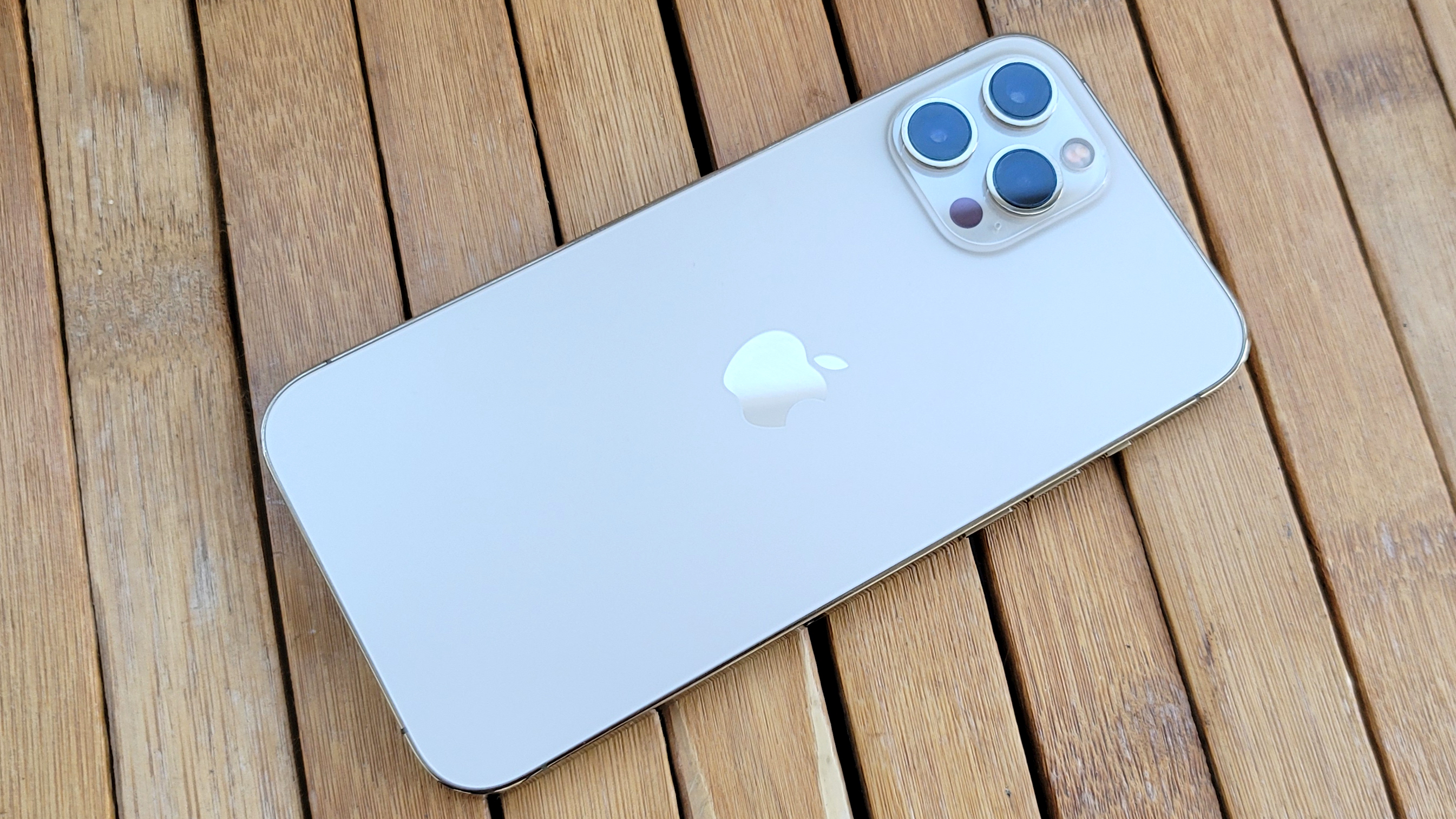
By comparison, the Galaxy Note 20 Ultra delivers a unique experience with the S Pen that can’t be matched by the iPhone, a similarly excellent camera experience and a beautiful design that should hold up throughout the next few phone generations. However, software support comes up short of Apple’s and the Snapdragon 865+ will show its age long before the A14 Bionic.
While both devices are excellent, most users are better served by the iPhone 12 Pro Max.
Sean Riley has been covering tech professionally for over a decade now. Most of that time was as a freelancer covering varied topics including phones, wearables, tablets, smart home devices, laptops, AR, VR, mobile payments, fintech, and more. Sean is the resident mobile expert at Laptop Mag, specializing in phones and wearables, you'll find plenty of news, reviews, how-to, and opinion pieces on these subjects from him here. But Laptop Mag has also proven a perfect fit for that broad range of interests with reviews and news on the latest laptops, VR games, and computer accessories along with coverage on everything from NFTs to cybersecurity and more.

